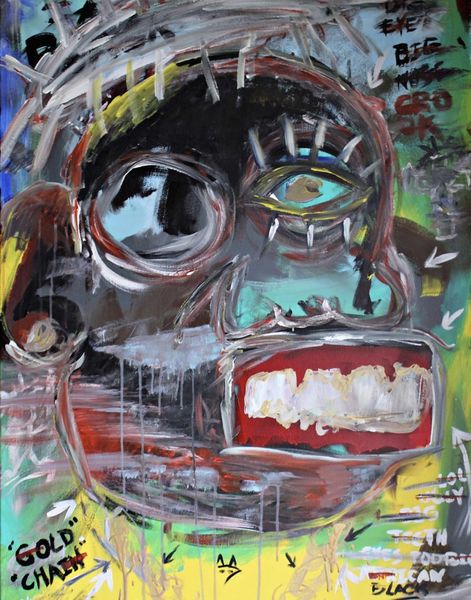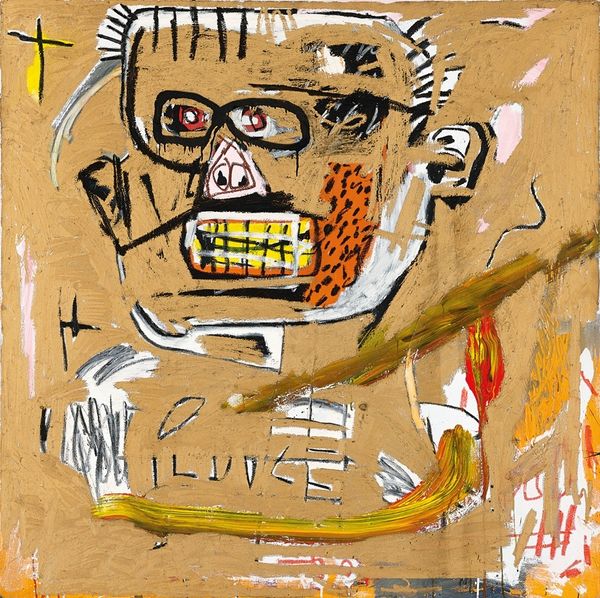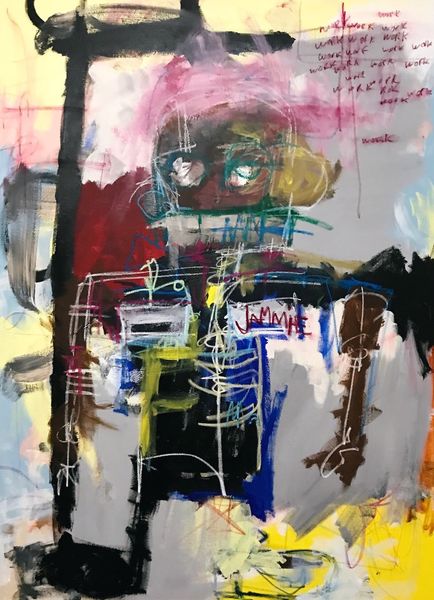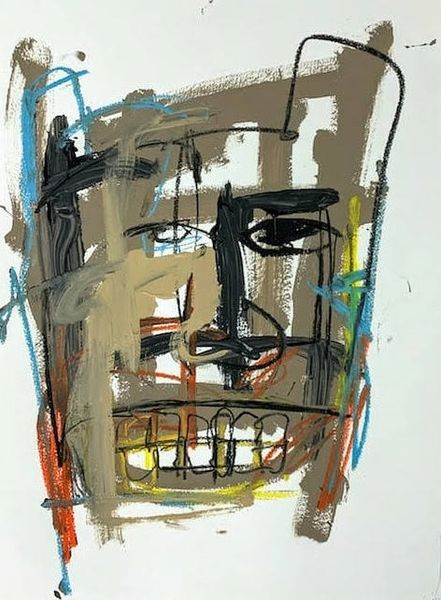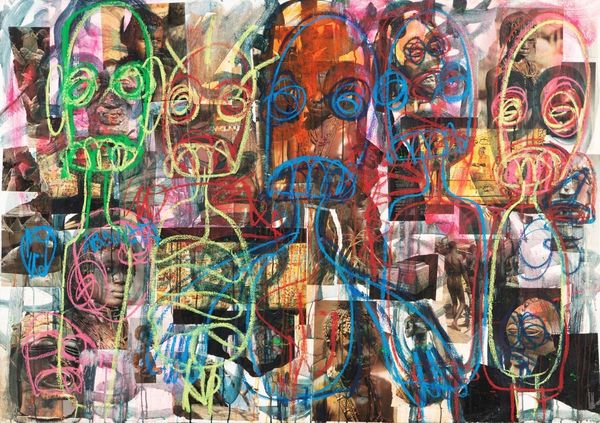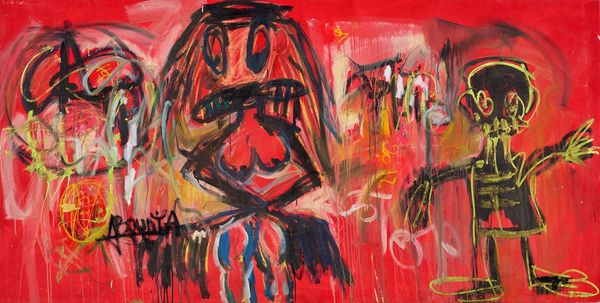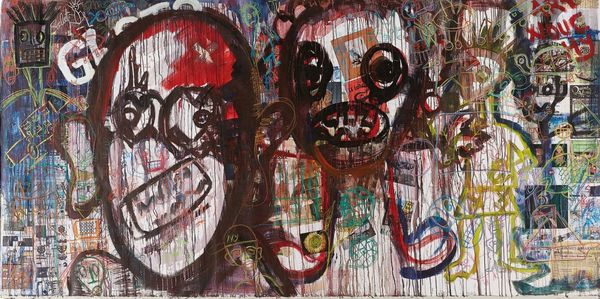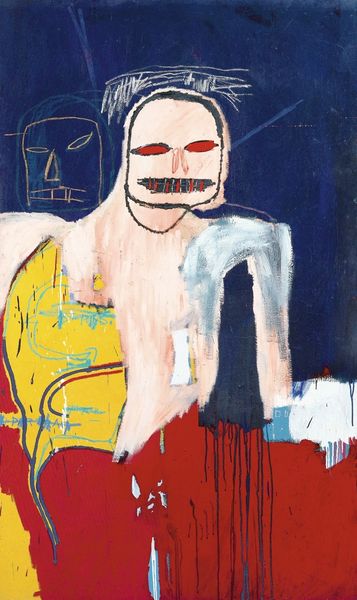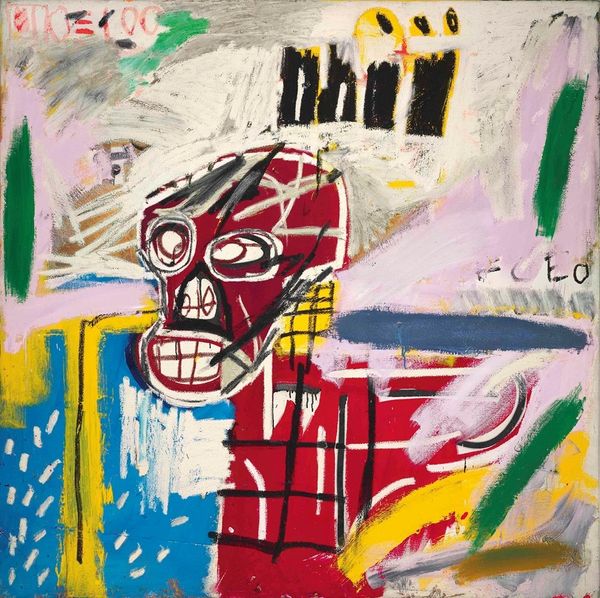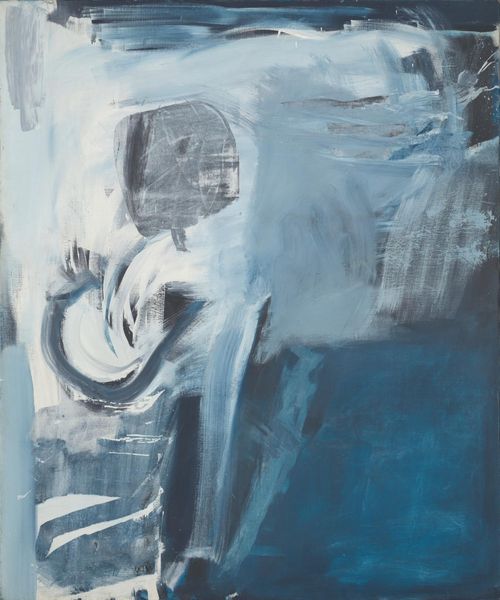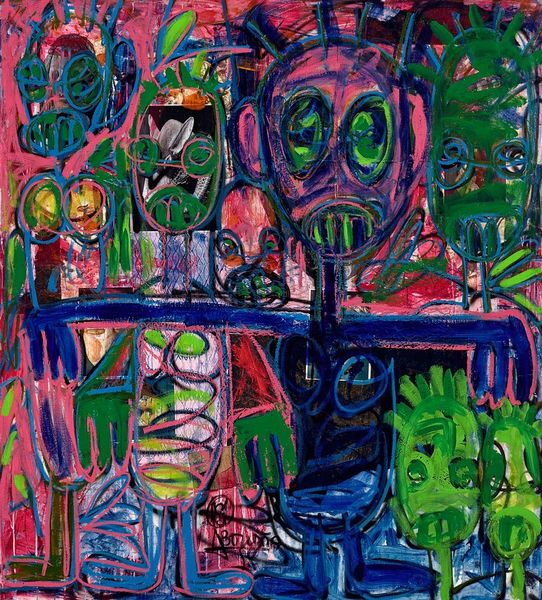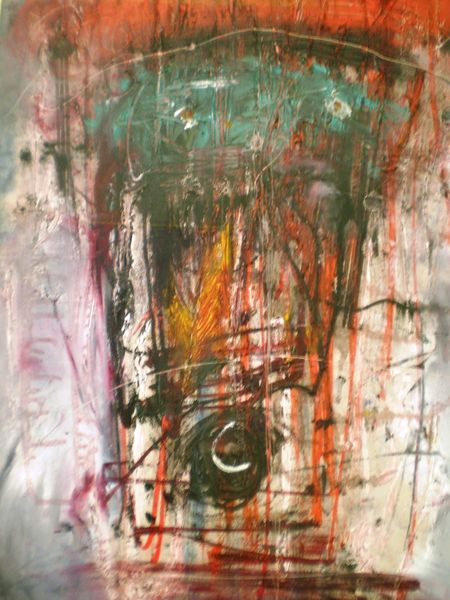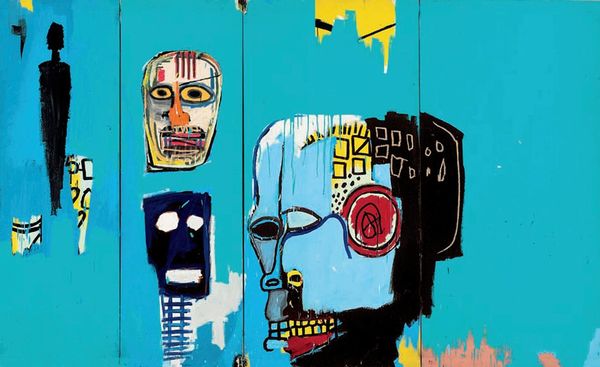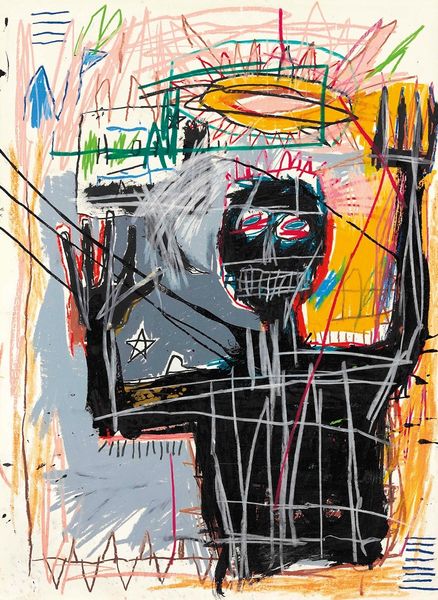
Copyright: Jammie Holmes,Fair Use
Curator: At first glance, there’s a raw, unsettling energy. The bold lines and chaotic composition feel incredibly visceral. Editor: Indeed. Let’s delve into Jammie Holmes' “Self Portrait 2,” crafted in 2018. Holmes employs mixed-media techniques here, primarily oil paint, to construct an expressionistic self-representation. It’s not just a portrait, but a statement. Curator: The layering of the paint, the visible strokes—you can almost feel the artist's hand at work. It speaks to the process of self-creation and perhaps self-destruction. Notice the intensity in the… well, where an eye would be. What are we to make of the skeletal teeth, or the faint text to the right of the work? The mark making becomes as crucial as the imagery itself. Editor: Absolutely. Given Holmes' broader body of work and his engagement with social issues, it’s tempting to see this distorted self-image as a reflection of societal pressures and the ways in which Black identity, specifically, is often contorted and scrutinized. It is almost like he is holding up a mirror not to himself, but to the viewer’s preconceived notions of what identity looks like, particularly Black masculinity, in the context of America. The work resists legibility in that sense. Curator: Yes, but doesn’t it also raise questions about the market? It’s difficult to disassociate painting from its inherent association with luxury objects. Does that context undermine a purely activist interpretation? And how do Holmes' choices of medium and technique play into art historical canons? The use of oil, typically seen as high art, to portray, shall we say, less traditionally "high art" subjects... Editor: That tension is precisely where the work thrives. Holmes appropriates a historical tradition and upends its established tropes to make visible what’s historically been hidden or erased from the art historical record. To assume that there is a fixed activist interpretation is to ignore its subtleties. What resonates most powerfully, for me, is how the labor and artistic processes are visible and speak to cultural issues of Black subjectivity. Curator: A fascinating conversation that’s also far from finished! It really invites consideration of selfhood, medium, and societal gaze. Editor: Precisely, leaving us to contemplate how artistic representation confronts and potentially disrupts ingrained sociopolitical assumptions.
Comments
No comments
Be the first to comment and join the conversation on the ultimate creative platform.
